Behind the Scenes of the ENDURO Disc Brake Testing

Disc brakes are one of the most important parts on your bike, performing well you hardly notice them, but if they go bad, well, that certainly gets your attention. We take you behind the scenes of our 2018 disc brake group test.
For our bisc brake group test head to: The best MTB disc brake you can buy
Powerful brakes are one of the most important aspects of our bike, they allow us to ride fast, they provide confidence and above all, they keep us safe. There is nothing more detrimental to performance than a poor performing brake. Over the last decade, disc brakes have evolved rapidly, the overall principle of pairs of pistons squeezing a steel rotor attached to the wheel has not changed, but the materials used, ease of bleeding and reliability have all advanced rapidly. A good disc brake will now provide all the braking torque we need, have great modulation and not need to be touched or bled for a full season.
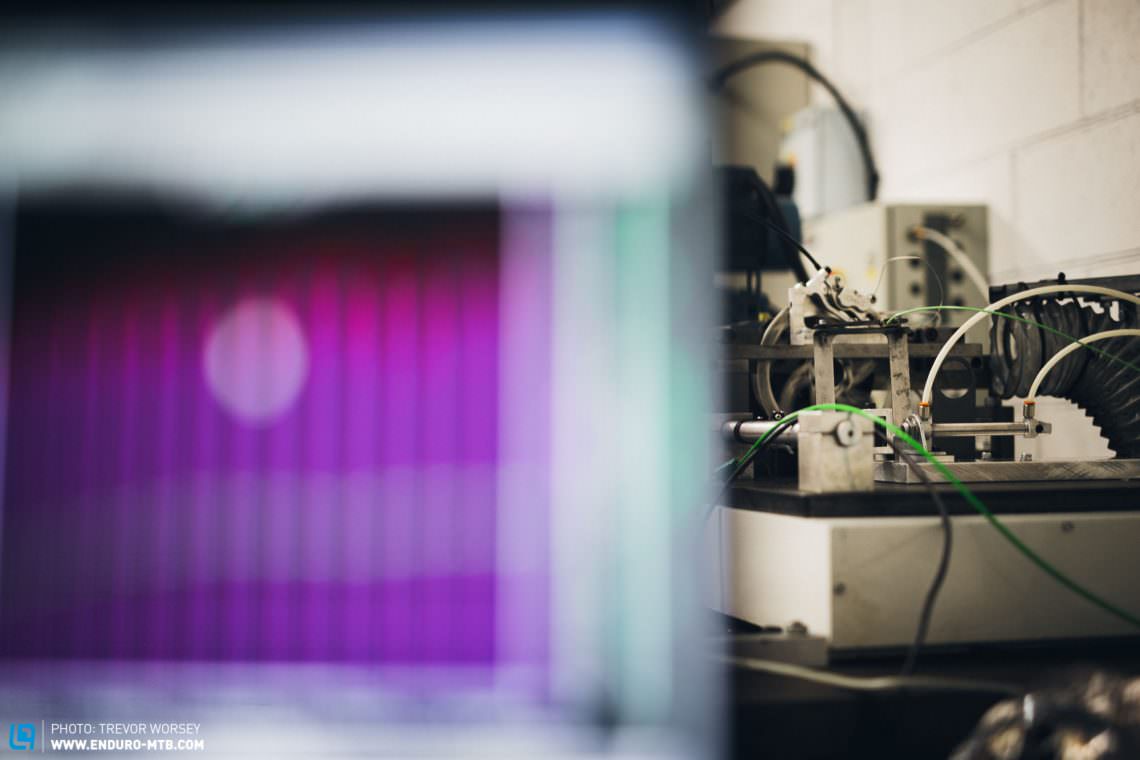

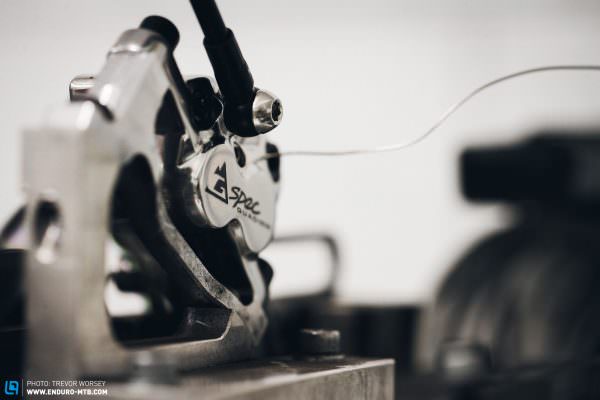
How can you say which brake is best, we all like different things?
Brakes are a very personal thing, some people like the contact point to be right on the bar, some like the lever to engage as far out as possible. Some like a grabby powerful brake, while other favour smooth modulation. To declare a ‘best’ brake means we have to make many assumptions about the riding style of the rider. However, there are now many brakes that offer a great balance of brake torque (power) and modulation, with levers that can be adjusted to suit many riding styles. You can read the results of our 2018 disk brake test in the current Issue #033, but here we will take you behind the scenes of the lab testing and field testing to find out more about how we test.
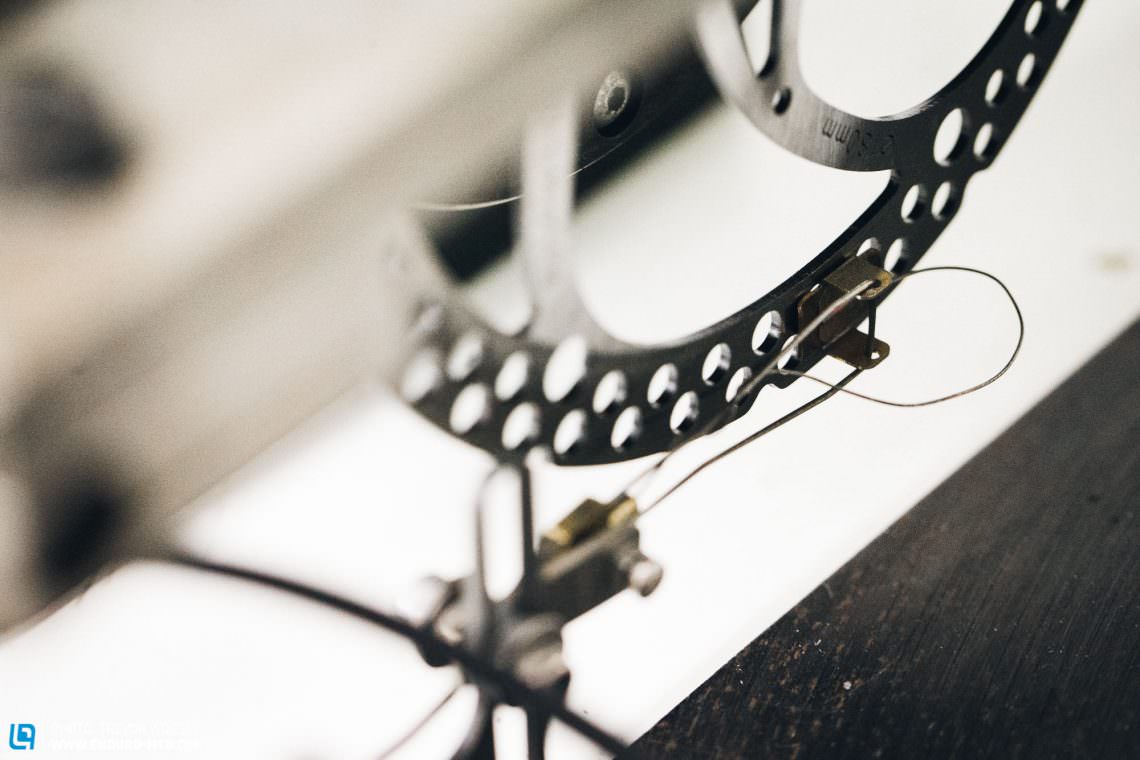
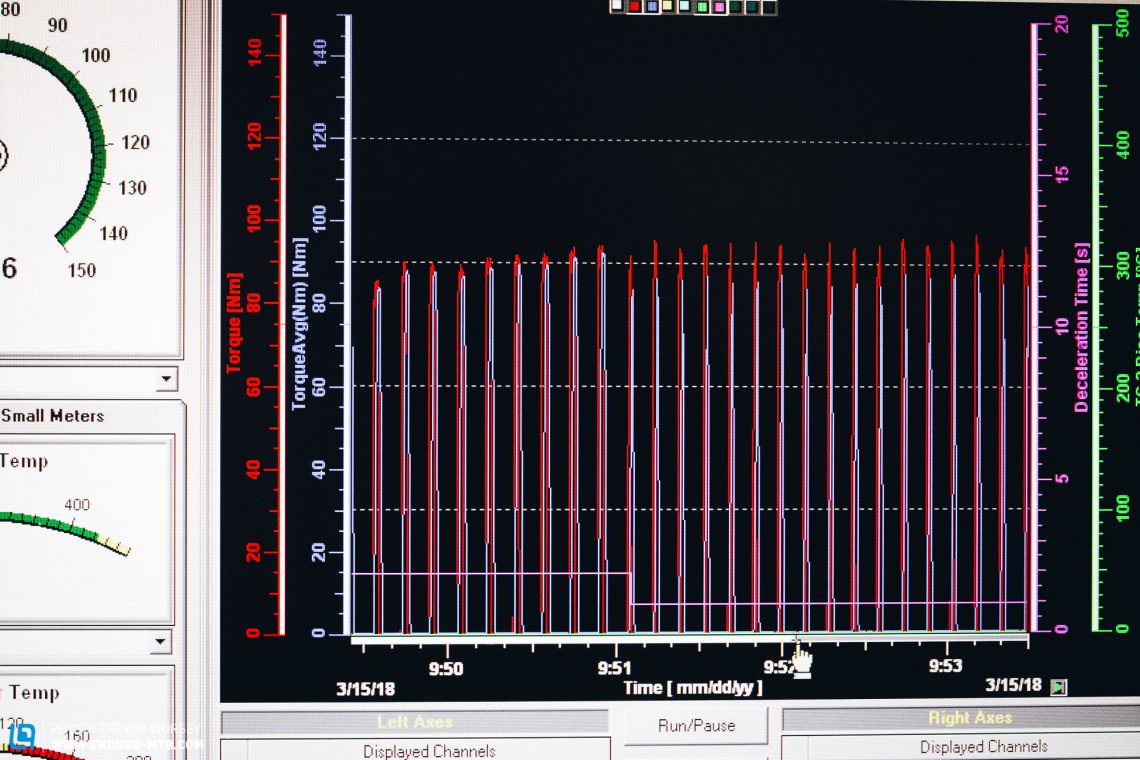
The test panel
In our 2018 group test we tested 19 sets of brakes (well 20, but one was too secret to talk about just yet). Each manufacturer sent us 3 complete sets of brakes from each model, bleed kits, spare pads and 3 x 180/200 mm rotors per brake (we used over 90 rotors during testing). To test the brakes we headed to Hope Technology labs in Barnoldswick, UK. Hope have been making cutting edge brakes for decades, and have a full in-house testing facility that they kindly let us use (abuse). In turn, each brake was fitted to a Dynamometer, a device that can simulate the rolling energy of a 100 kg weight (rider and bike), and then using highly accurate strain gauges, measure the braking torque applied by the brake at it attempts to slow down the simulated rider. Temperatures are also taken from the disc surface and caliper to measure heat build up during the testing.

| Brake | Price* | Weight** |
|---|---|---|
| Formula Cura | € 124 | 466 g |
| Hope T3 E4 | € 215 | 488 g |
| Hope T3 V4 | € 235 | 490 g |
| Magura MT5 | € 111 | 470 g |
| Magura MT7 | € 219 | 488 g |
| Magura MT Trail Carbon | € 579 (set) | 429 g | Magura MT Trail Sport | € 219 (set) | 458 g | Shimano DEORE | € 73 | 548 g | Shimano SAINT | € 237 | 594 g | Shimano XT | € 146 | 528 g | Shimano ZEE | € 146 | 576 g | SRAM Code R | € 170 | 514 g | SRAM Code RSC | € 270 | 566 g | SRAM Guide T | € 117 | 546 g | SRAM Guide Ultimate | € 301 | 446 g | SRAM Level Ultimate | € 310 | 352 g | Trickstuff Diretissima | € 375 | 388 g | TRP G-Spec Quadiem | € 219 | 608 g | TRP G-Spec Slate | € 219 | 574 g |
* per brake (except MAGURA’s MT TRAIL which have different calipers for front and rear and therefore only comes as a set)
** front + rear w/o rotors
Pressing the lever, how much is too much?
The brake lever is pressed during testing with a hydraulic ‘finger’ dosing out the same pressure again and again with unflinching accuracy, there is no arm pump here. One of the toughest decisions we faced was choosing what pressure to apply to the brake lever in the lab. We could have measured absolute power of the brakes, activating the lever as hard as the artificial lever allowed, but if we apply a force that is unobtainable by a single human figure, then the results are meaningless on the trail. Also, a tyre contact patch can only transmit a limited braking torque to the ground, so we needed to test the brakes at a reproducible force that made sense in the real world. After extensive optimization with strain gauges we activated the levers at a force of 40N, around 9 lbs of pressure, this is about the same pressure as you would find on a ‘hard’ level hand exerciser, imagine braking from high-speed into a steep bike park corner, it’s about that much force. The ‘artificial’ finger pushed each brake at the natural single finger point, and each brake was adjusted so the pads contacted the disc at the same point of lever throw.
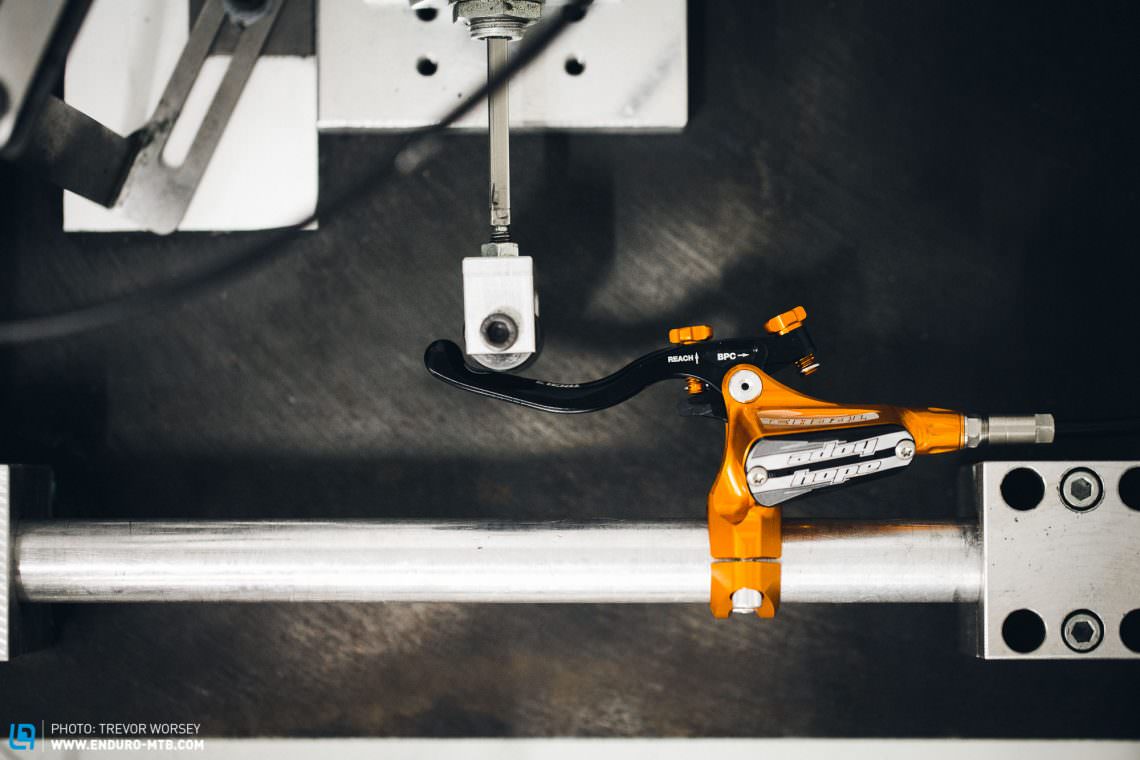
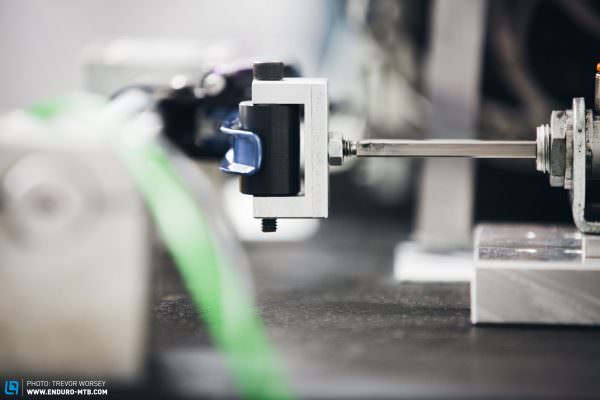
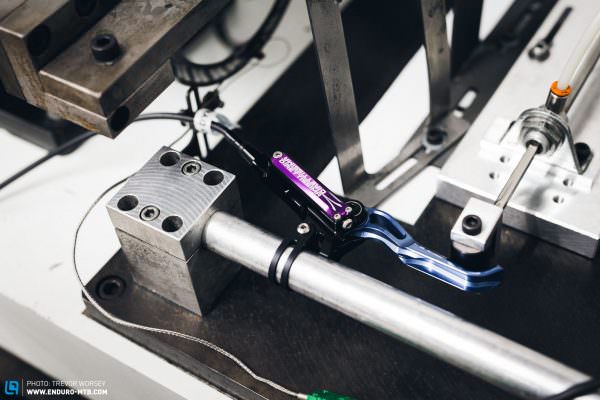
For each run, a fresh rotor and pads were fitted and the caliper correctly aligned to the pads. Once set up, the dynomometer was switched on, motors hummed, fans kicked in and the huge emergency brakes disengaged. A 30 kph artificial wind was started to model the natural cool while riding as a powerful motor spins up the disc rotor. For the next half an hour, the test brakes was subjected to a gruelling test.

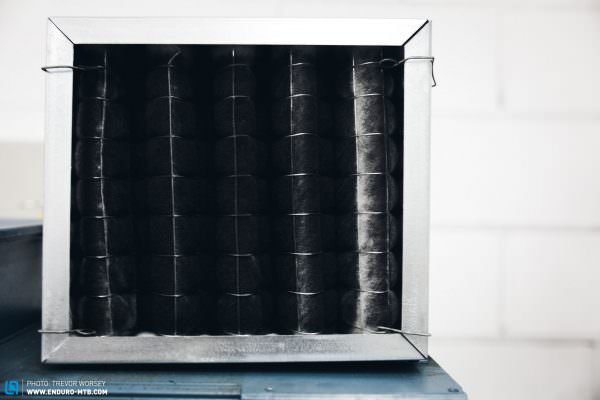
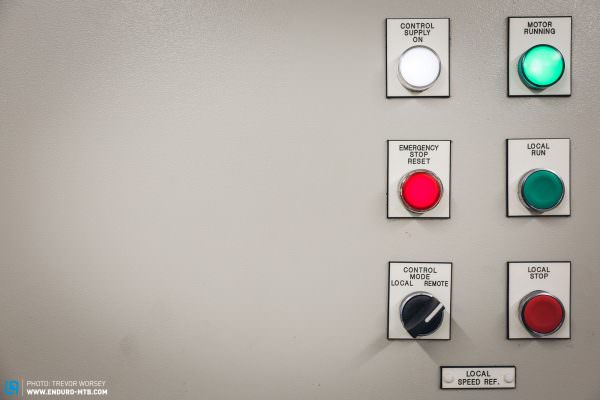
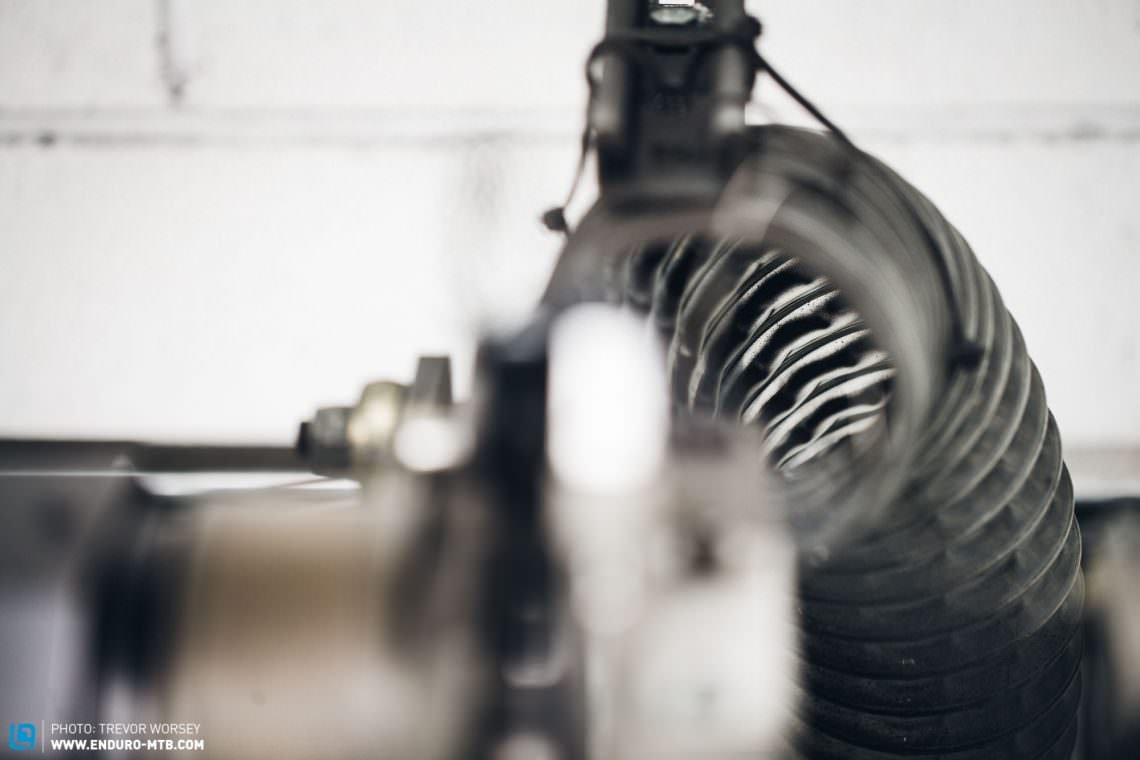
Bedding in – During this phase the pads are properly mated to the rotor surface, coating the surface of the rotor with pad material for maximum friction. The rotor was repeatedly accelerated to a speed of 20 kph, then the brake lever was pressed for one second, the rotor accelerated back up to speed and the brake pressed again, 40 times. The second stage involved a 2 second press which brought the rotor to a stop, before being accelerated again and repeated 40 times. This entire process was repeated again to ensure the pads were properly bedding in. We monitored the process on the computer to ensure that braking torques had plateaued and that bedding in had been successful.
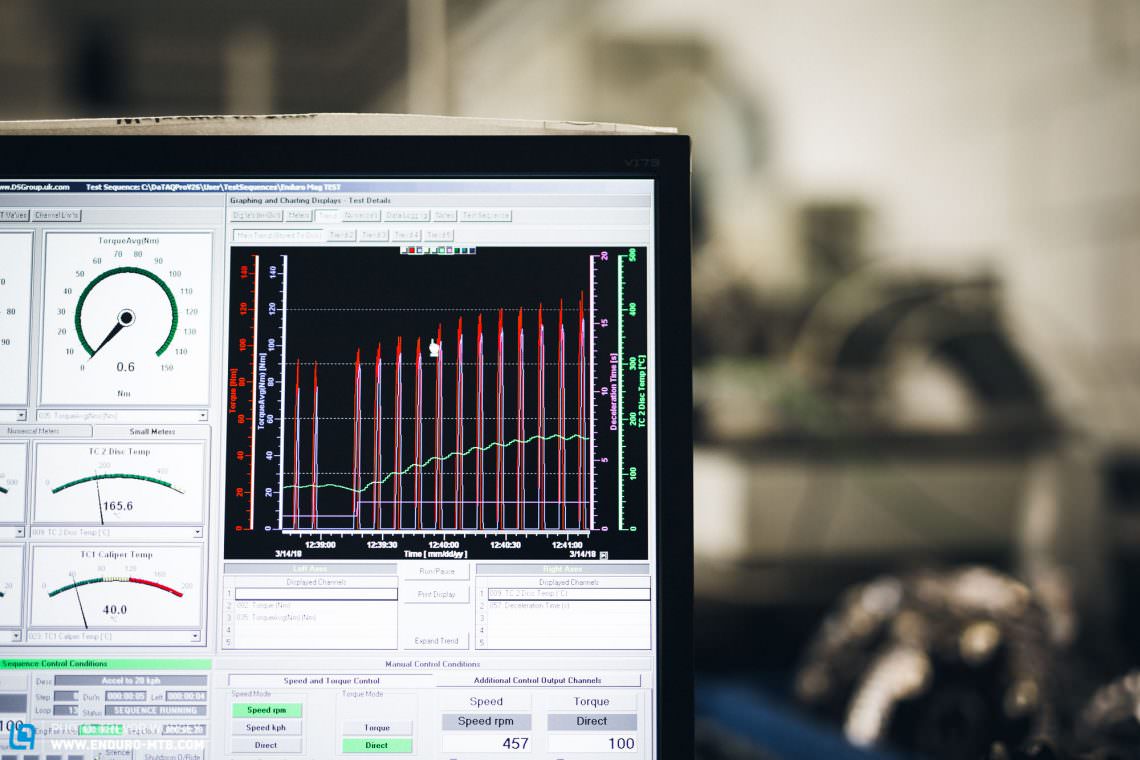
Deceleration testing – Once bedding in the real testing began. The dynamometer accelerated the rotor to 35 kph, and the brakes were pulled hard, the computer measured the braking torque applied, the temperature build up and the time taken to decelerate the 100 kg simulated rider from 35 – 15 kph. This was repeated 10 times in succession to take an average deceleration time. Testing was repeated at 35 – 0 kph and finally the toughest test of all, 10 repeated hard cycles pulling down from 45-0 kph, a very demanding test that scorched the brake pads and saw disc temperatures climb over 400 degrees.


At the end of each test, the data was uploaded into trend analyser software, allowing us to pull out the interesting figures and present it in a format that makes sense, average powers and deceleration times.
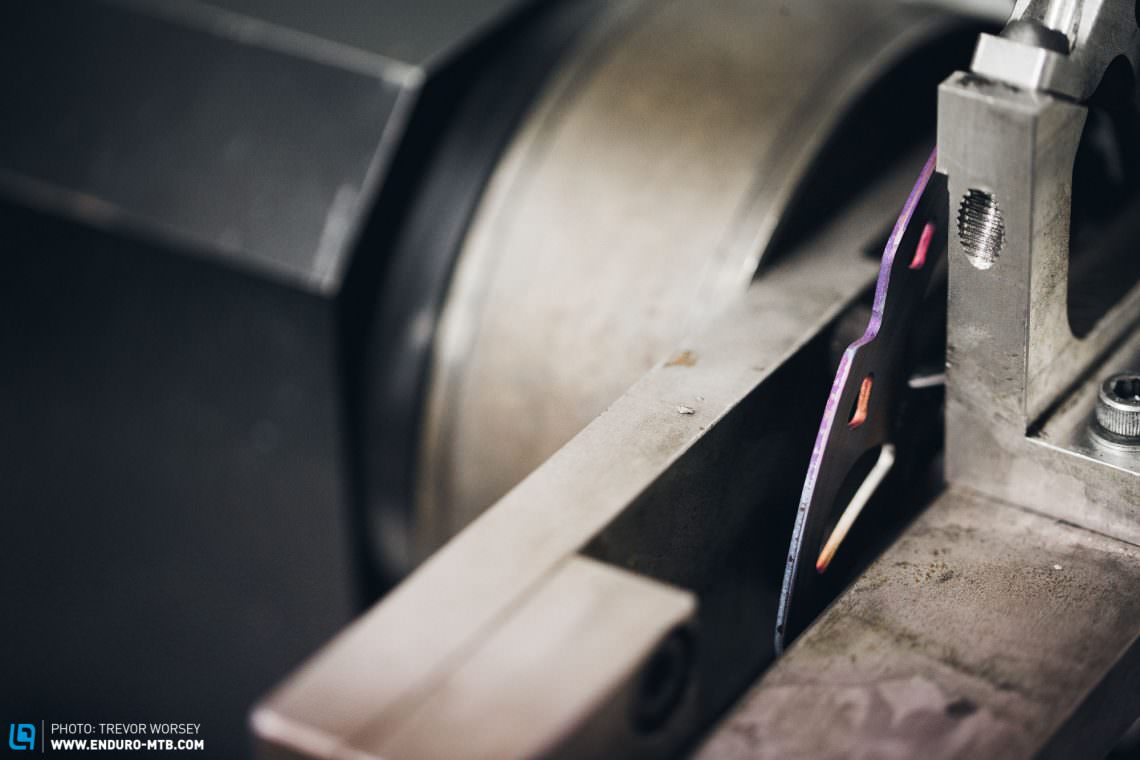

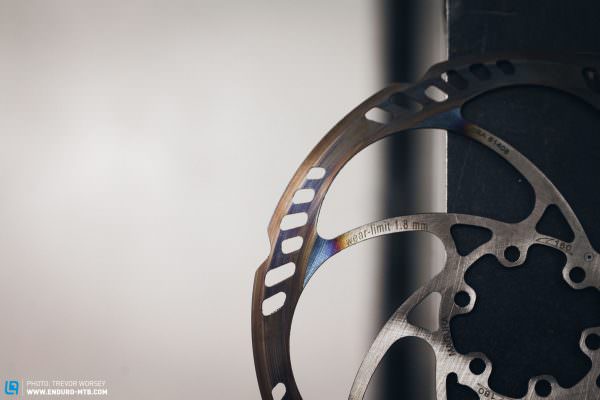
So which brakes are the best?
After all the numbers were crunched we had our data and rankings, and you can see how every brake performed in our Group Test in the current issue. However, even though lab results are a vital component of our testing, they are only half the story, what’s more important is how they perform on the trails. To find out, we put the brakes through extensive trail testing in the gentle (well, not so gentle) hands of our experienced testers. For four months we rode every brake, bad-lines, crashes, late braking, emergency bleeds in car parks, rain and shine, from long alpine runs to hard charges on home trails. Each brake was scored for its power, modulation and performance on the trail. The brakes were all disassembled, bled and fitted to numerous bikes to ensure they were easy to live with. After some tough conversations and arguments, we had our winners, but it was close.
If you want to read the full results of testing, see the star performers from the lab and trail and find out which brake is the best on the market, you can do so in our 2018 Disc Brake Group Test in Issue #033 now.
Did you enjoy this article? If so, we would be stoked if you decide to support us with a monthly contribution. By becoming a supporter of ENDURO, you will help secure a sustainable future for high-quality mountain bike journalism. Click here to learn more.
Words & Photos:








